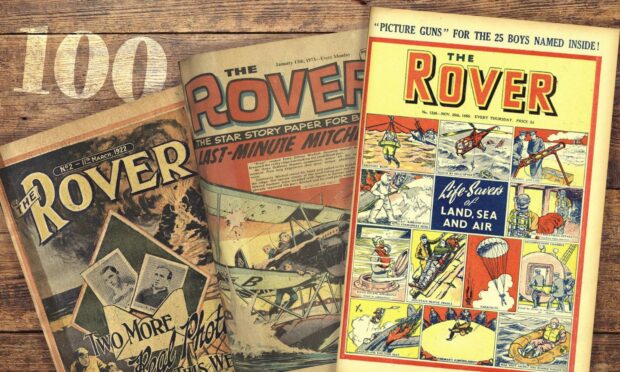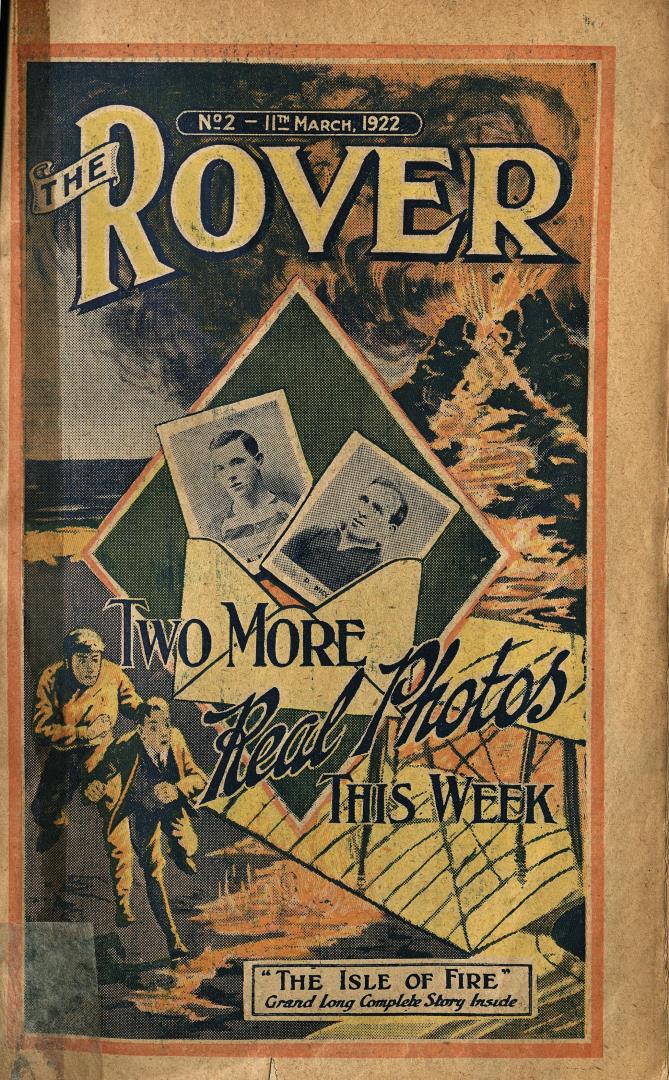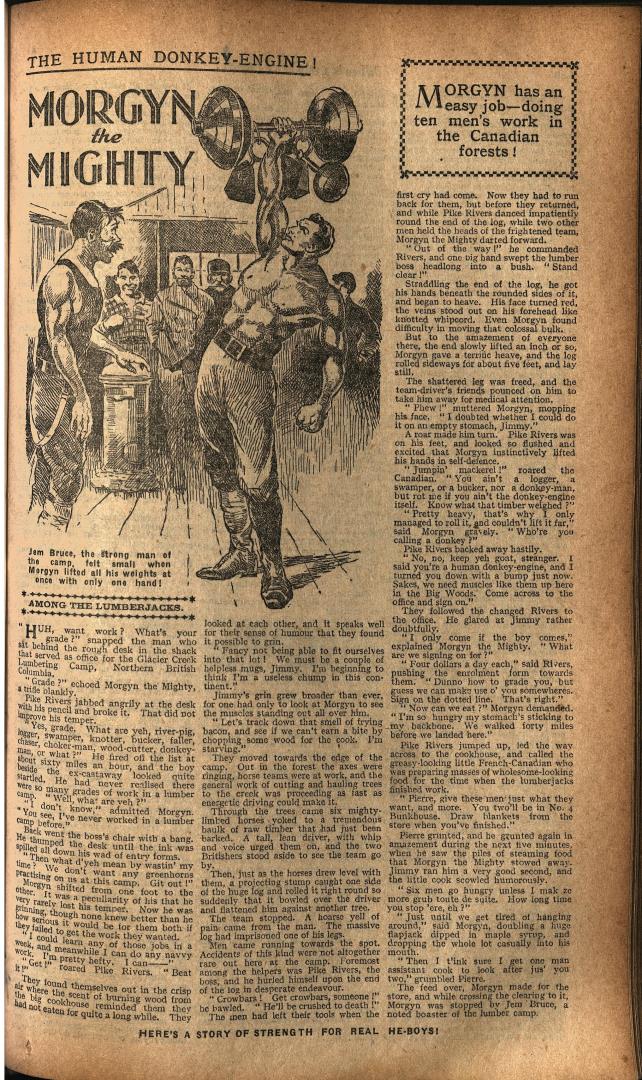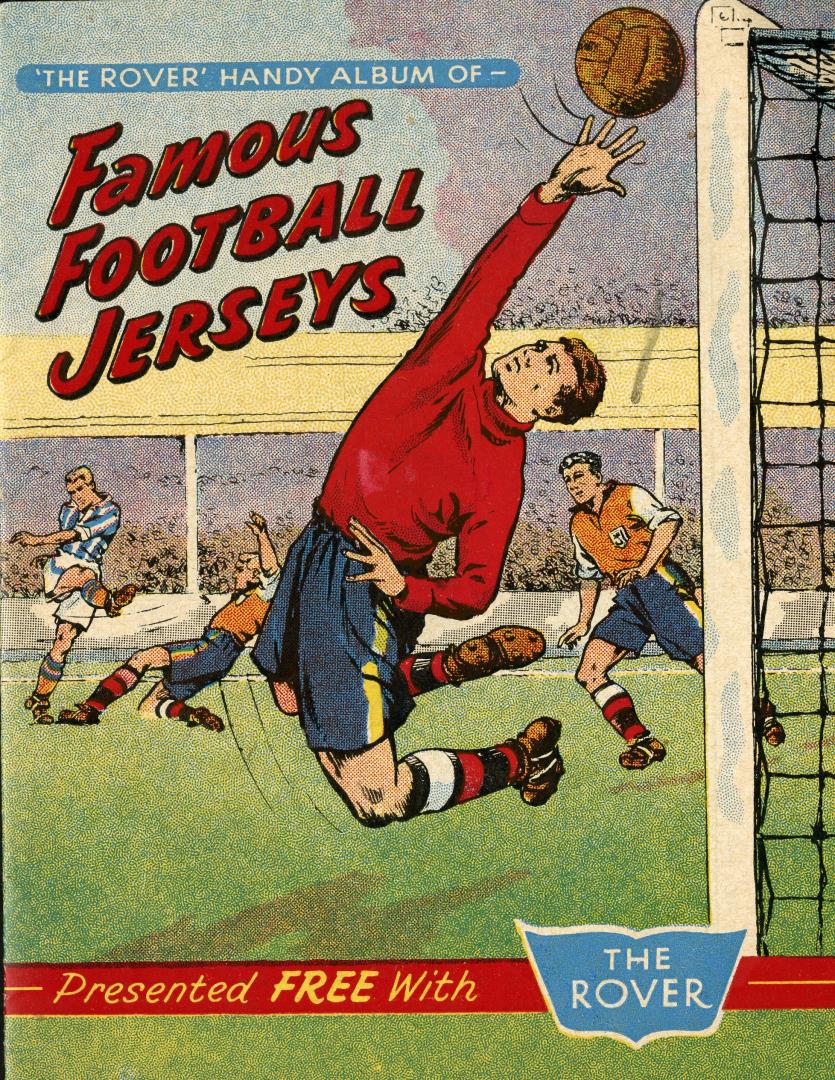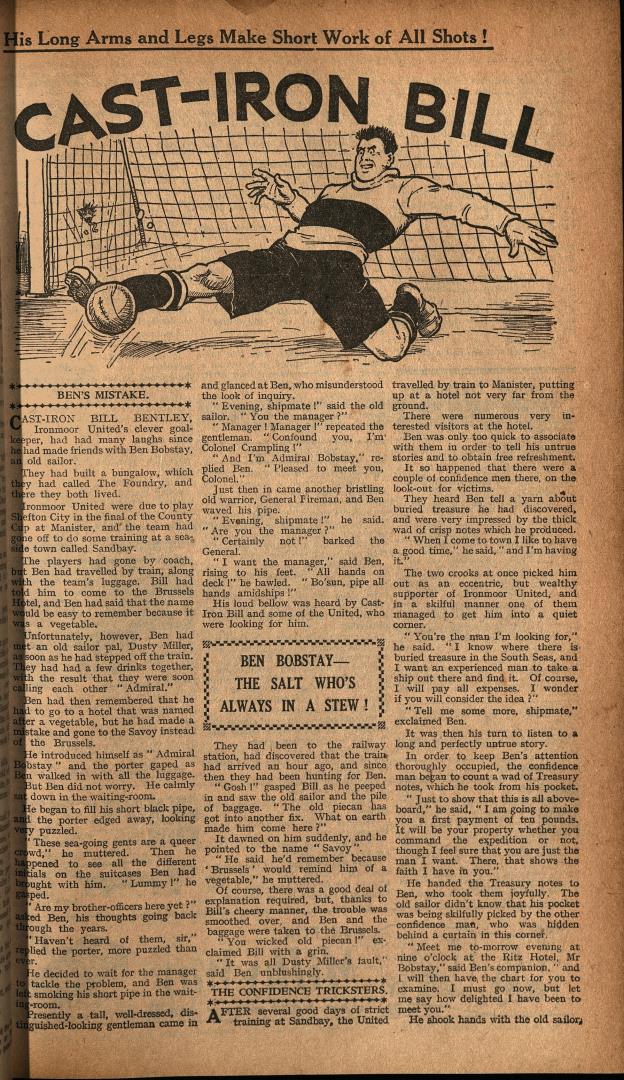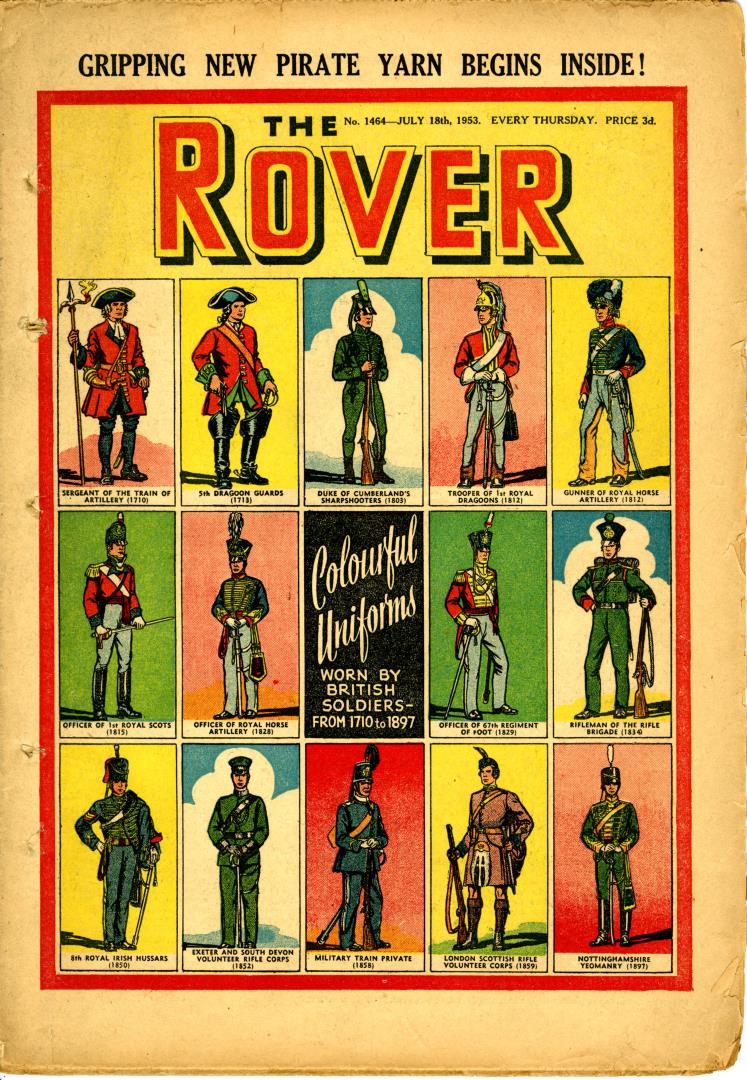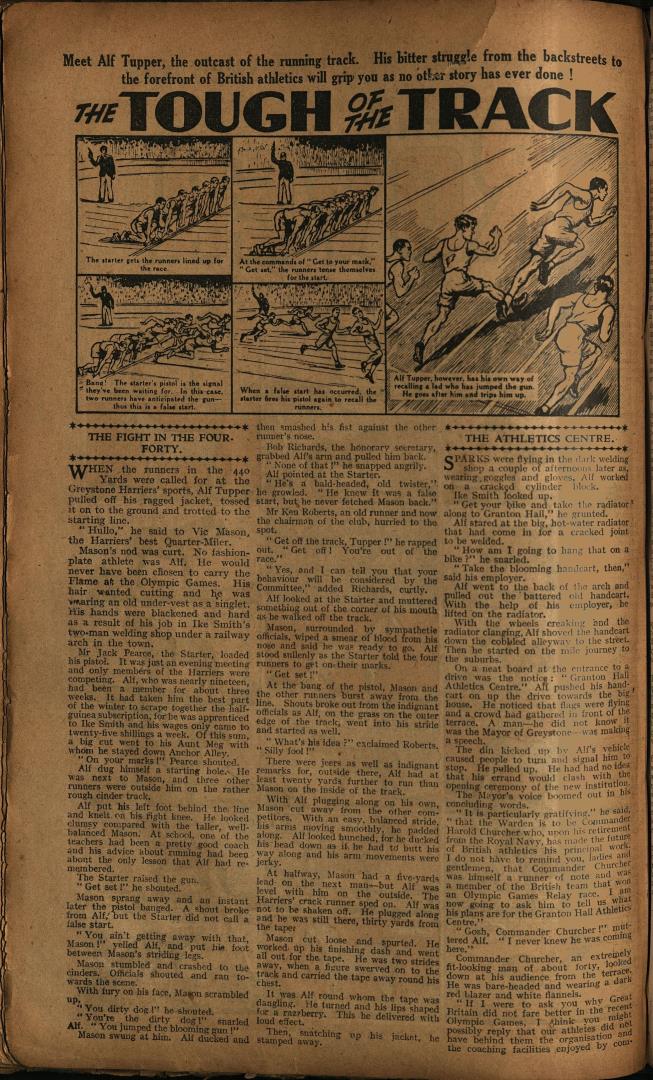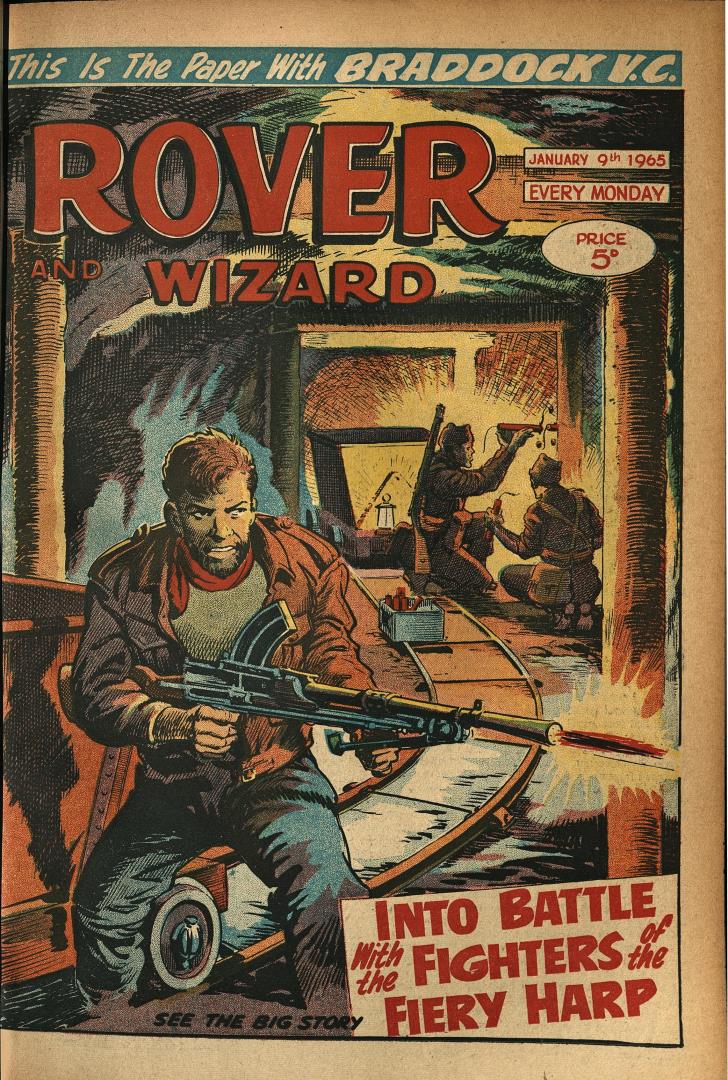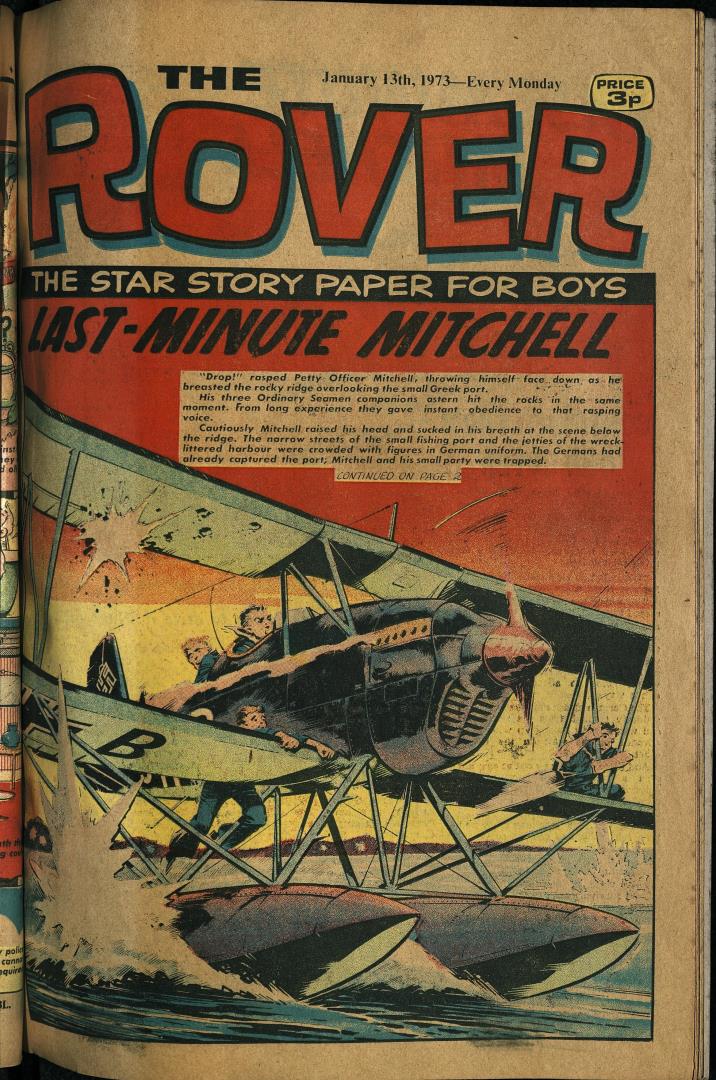Before there was The Beano or The Dandy, there was The Rover.
The success of the Adventure comic in 1921 led to the creation of the ‘Big Five’: Adventure, The Rover, Wizard, Skipper and Hotspur.
The Big Five were eventually read by two out of every three boys in the country.
Dudley D. Watkins contributed illustrations to the early issues.
Rover celebrates its 100th anniversary this month, which gives us the perfect opportunity to look back at how its story unfolded.
The Rover’s first issue was published by DC Thomson on March 4 1922.
As the second of the Big Five, it followed Adventure, which had launched the previous year.
It featured illustrated stories of adventure, sports, schooldays, and crime, and also included puzzles, jokes, and competitions.
The first Rover competition offered a prize of £25, which was a month’s wages for many men in the UK at the time.
Little wonder these proved popular back in the day!
The first weekly issue in 1922 carried a text story, The Traitor of the Team, written by Arthur Grimsdell, a famous Tottenham Hotspur and England footballer.
Perth-based historian Dr Norman Watson has researched the history of the popular comic and has taken a look back at what the first issue was like.
He said: “Rover’s first issue featured a curious front cover.
“It was dominated by palm trees and an unusual back page of comic strips.”
The front page of Rover’s first issue carried the strapline: ‘No 1 of a Great New Paper’.
It would certainly deliver!
Dr Watson continued: “Rover’s first issue gave away two photographs of well-known footballers.
“There were pen pictures of the two players inside.”
A popular character from the early era of Rover was goalkeeper Cast-Iron Bill.
Cast-Iron Bill, also known as Bill Steele, was a fourth division goalkeeper and allegedly the toughest man in football.
When Bill wasn’t playing football in the comics, he was found to be fighting crime or saving injured hill walkers.
One memorable storyline involving the Cumbria stalwart featured his side playing a match in thick fog where the players were guided by Bill’s dogs!
Rover was published weekly from its release in 1922 until the Second World War.
From 1939 to 1945, Rover was published fortnightly and reduced to 16 pages when paper was rationed during the conflict.
After December 7 1946 it was published for only three weeks of the month after the guns fell silent, before a full return to weekly publishing on April 2 1949.
The Second World War brought some new characters to the Rover.
Working-class hero, ‘Tough of the Track’ Alf Tupper, was introduced in 1949, alongside wartime flying ace Matt Braddock.
Morgan the Mighty was another favourite.
Each of these beloved characters’ serial stories generally lasted between 10 and 20 weeks.
The Rover ran a very successful series of front covers showing school badges in the 1950s. These were avidly collected by pupils across the country.
After a near-40-year run as a stand-alone title, The Rover merged with Adventure in 1961.
Rover and Adventure had a price rise from 4d to 5d.
The last issue of Rover prior to the merger was numbered 1855.
Numbers were discontinued on Rover and Adventure.
Rover and Adventure survived until October 19 1963, when the paper reverted back to a stand-alone for five issues.
It then absorbed The Wizard to become Rover and Wizard on November 23 1963.
The title once again reverted back to The Rover on August 16 1969 and adopted the strapline The Star Story Paper For Boys.
The Rover finally ceased publication on January 13 1973, 626 issues after its union with Adventure in 1961.
That was it for the comic which thrilled generations of readers.
Unlike other Dundee-produced comics, Rover doesn’t have a complete run of annuals.
Its annuals were issued in three blocks: 1926-1942, 1950 and 1956-1959.
They were small and chunky, just over the size of an A5 sheet of paper.
The 1950 annual was the first to adopt traditional annual proportions.
The last Rover annual appeared in 1959 and remains one of the most famous comic books of all-time.
More like this:
We Are United: Remembering the magic of Football Picture Story Monthly
